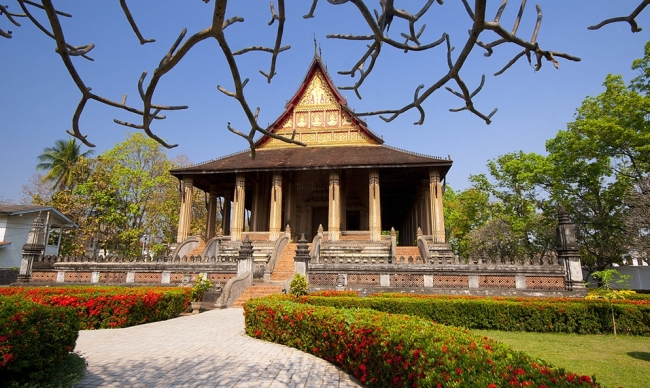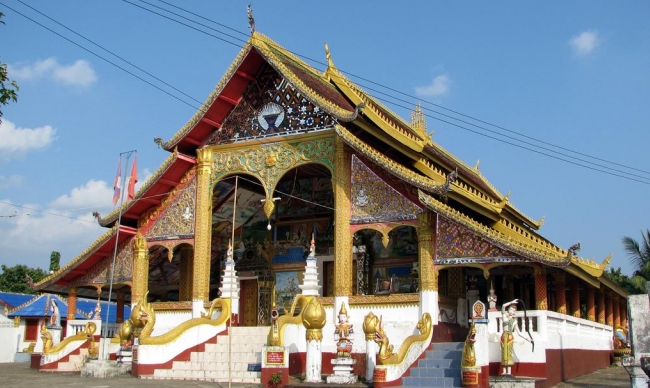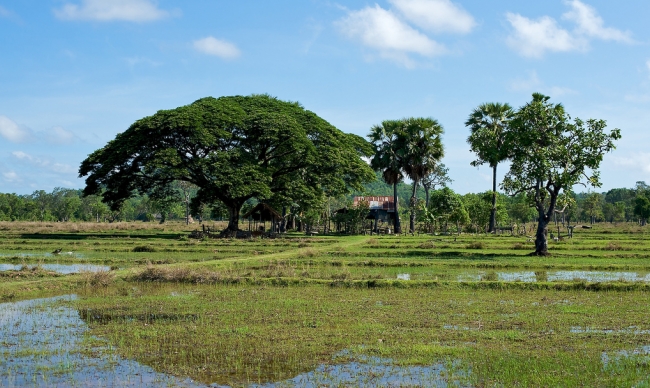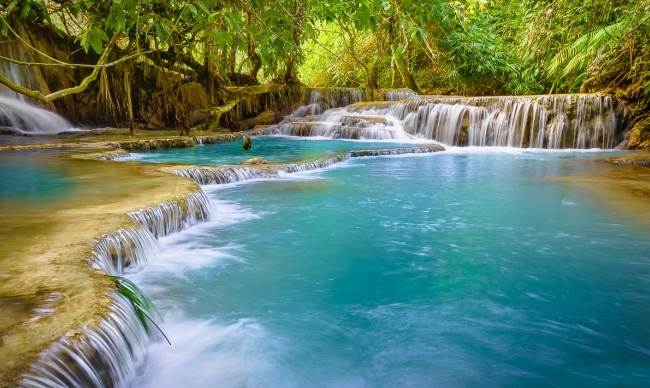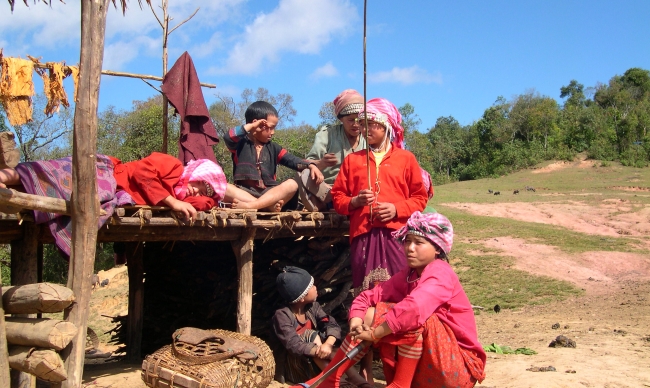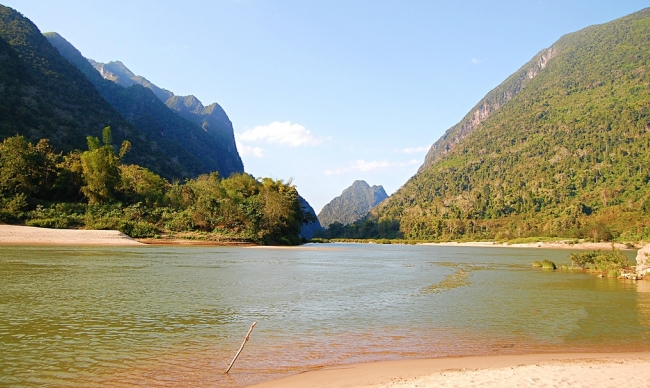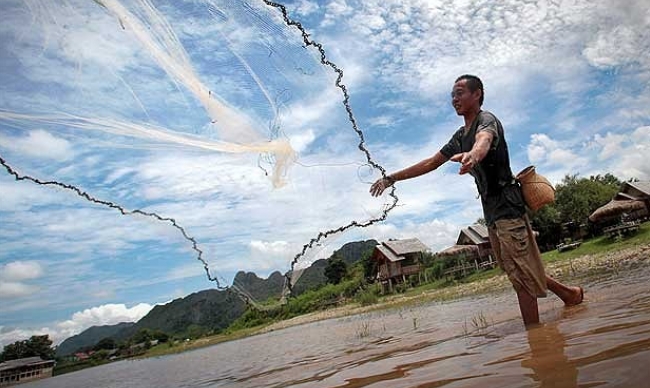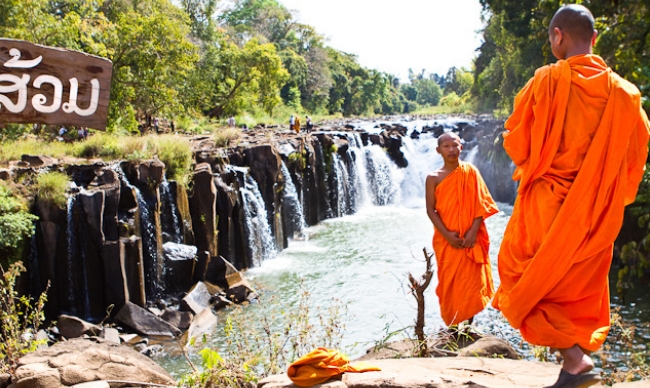Situated at the end of Lang Xang Avenue in the heart of Vientian, Patuxai is Vientiane's most prominent war monument. Patuxai has literal name meaning Victory Gate or Gate of Triumph, formerly the Anousavary or Anosavari Monument and was known by the French as Monument Aux. Patuxai was built between 1957 and 1968 using American funds to be dedicated to those who sacrificed during World War II and in the struggle for independence from France in 1949.
Situated at the end of Lang Xang Avenue in the heart of Vientian, Patuxai is Vientiane’s most prominent war monument. Patuxai has literal name meaning Victory Gate or Gate of Triumph, formerly the Anousavary or Anosavari Monument and was known by the French as Monument Aux. Patuxai was built between 1957 and 1968 using American funds to be dedicated to those who sacrificed during World War II and in the struggle for independence from France in 1949.
Patuxai features four arches, facing North, South, East and West and five towers presenting the five principles of coexistence among nations of the world as well as the five Buddhist principles of “thoughtful amiability, flexibility, honesty, honor and prosperity. Each tower has a stairway. The central larger tower above the floor also has staircase leading to the top floor that offers a panoramic view of Vientiane. The seven floors of the monument consist of administrative offices as well as a gift shop, a museum and the upper viewing galleries. The offices of the management lies on the first floor. The second floor is where a museum is situated, displaying statues and pictures of the iconic heroes and heroines of the country. Around the monument is Patuxai Park with elegant garden, palm trees and lotus ponds, a musical fountain donated by the Chinese, is a popular place for people strolling around in the afternoons.


